
Dove trees are blooming here in the Willamette Valley on this fine late April day (we’re having a heat wave, so they’re a little early), and they’re making a spectacular show. The dove tree, a.k.a. handkerchief tree, ghost tree, laundry tree, or Davidia involucrata, is a rare and exquisite tree with a great story to boot.
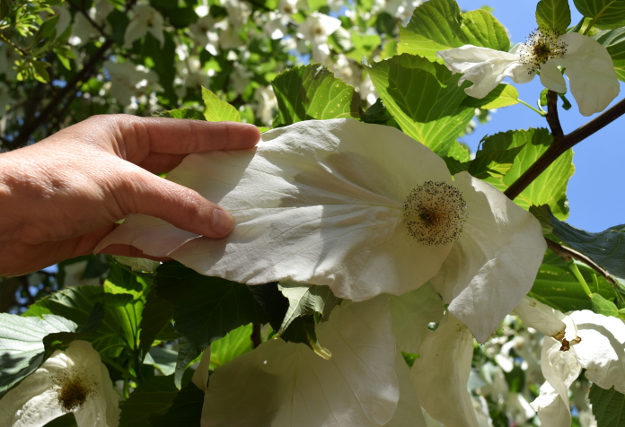
Once classified in the black gum family (Nyssaceae), Davidia—along with black gum (Nyssa sylvatica)—has been moved to the dogwood family (Cornaceae). Like many dogwoods, the small, fuzzy true flowers that do the business of reproduction are surrounded by large, flashy bracts, or modified leaves, which in the case of Davidia involucrata look like dove wings or handkerchiefs. On dove trees there are two bracts of different sizes surrounding each flower. The bigger bract can be 8 inches long.
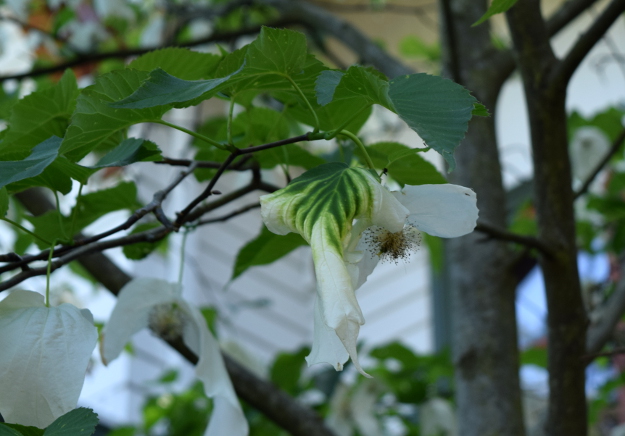
This mutant bract wasn’t sure it wanted to make the transformation; you can see that the structure has its origins as a leaf.

Nestled in the true flower is one (occasionally more) pistil (the female part), attended by a bevy of dark purple anthers (the male parts).
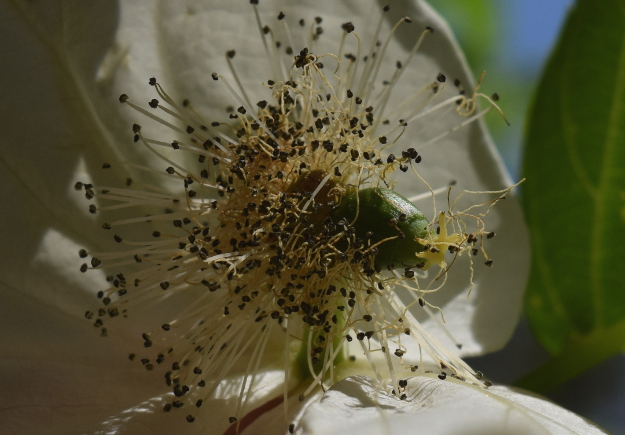
Once fertilized, the green ovary begins to swell, and with their work done, the dark purple-capped stamens fall away. A hard fruit the size of a golf ball forms.

Davidia involucrata has clean foliage that’s untroubled by pests or diseases.
There are some reports that say the leaves fall off green; others say that the foliage can turn yellow or red first. I’ll have to report back to you on that.
There’s also mention that the expanding leaves have a disagreeable odor. I didn’t detect that at all, but the flowers themselves do have a musty hawthorn-like aroma. The smell is distinct but not overpowering, and it’s totally excusable considering the magnificent show that the blooms make.

Dove tree grows 20 to 40 feet tall and wide. It’s known for being slow to reach flowering age—only after 10 or even 20 years does it put out its first blooms in some cases. This is the cultivar ‘Sonoma’, which is the one to get if you want yours to flower at an early age. I’ve also seen the selection called ‘Kylee’s Columnar’ blooming at not much more than 1 foot tall in a 1-gallon container!
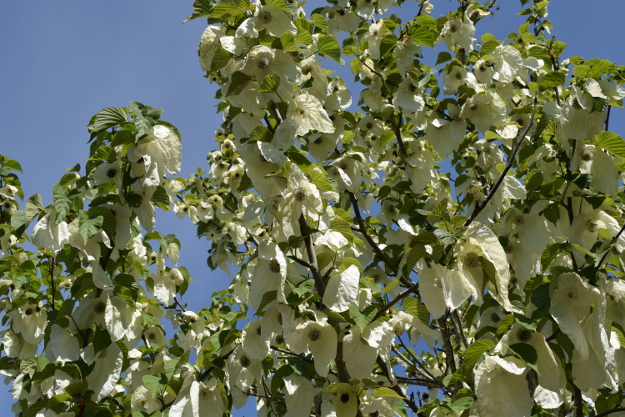
Davidia involucrata hails from China and is named after the first Westerner to describe it, a French monk named Père Armand David, who did much botanizing in China and who also lent his name to the butterfly bush, Buddleia davidii. Father David spotted a single tree in 1869, but wasn’t able to send seed back to Europe.
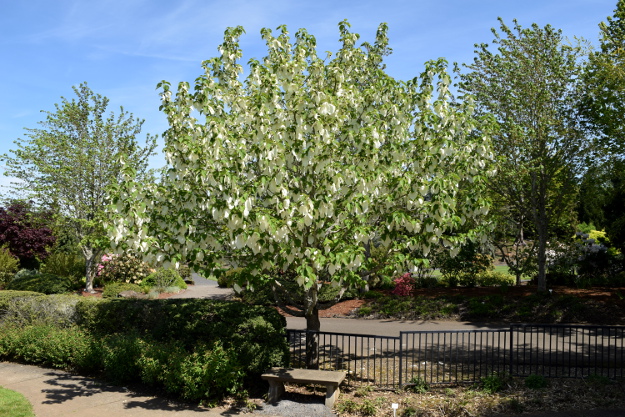
The second Westerner to spot a dove tree in China was an Irish physician and botanist named Augustine Henry, in 1888. Henry didn’t send seed to Europe, either, but his description of it gave one of the most successful nurserymen of the time, an Englishman named Sir Henry Veitch, serious plant lust. In 1899, Veitch employed young E.H. Wilson, an aspiring plant explorer who would go on to have an illustrious career in horticulture, to travel to China and secure the plant. The 23-year-old Wilson had never even traveled abroad, but he took on the mission. Following a map Augustine Henry had made, Wilson trekked 1500 miles to find that same tree, and lo and behold, he arrived at the site.

The lone tree had been cut down. The holy grail of trees was now timber used in the construction of a house. Discouraged but not defeated, Wilson pressed on and was finally able to find more trees. In 1901, he brought back to Veitch hundreds of seeds (despite a boat wreck on the way home). However, the glory of being the first to procure the coveted tree was not to be his after all.
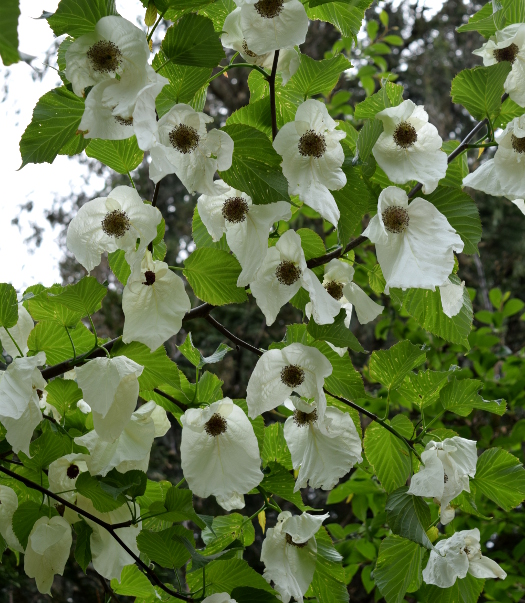
Unbeknownst to Veitch and Wilson, four years earlier a French missionary in China named Père Paul Guillaume Farges had sent back to France 37 Davidia seeds. One of the trees germinated at the arboretum of Maurice de Vilmorin in 1899. It bloomed in 1906. Veitch’s trees didn’t begin to flower until 1911.
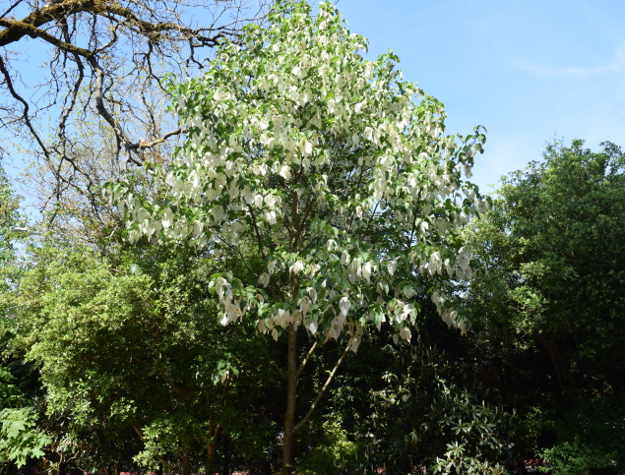
Davidia involucrata prefers rich, moist, organic soil and shade during the hottest part of the day. It’s hardy to zones 6 to 8, but is sensitive to cold in its early years. With summer water, it’s quite happy in the Pacific Northwest, though fine specimens exist in some of the milder regions of the eastern U.S. as well. Gardeners in much of Europe have success with dove trees, too.
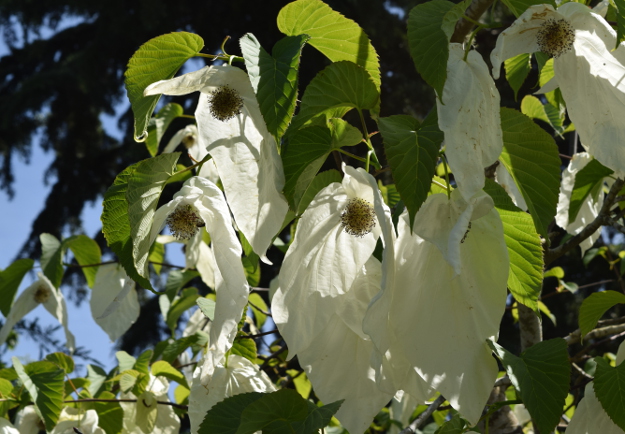
It might be a bit of a one-trick pony (I will check back on the fall color), but man, what a trick!


Well, that’s a beautiful and heartbreaking story. A gorgeous tree to be sure. And aren’t we lucky there were all those intrepid early plant lusters.
The stories of some of those plant explorers make for some fascinating reading!
I had known about this tree but didn’t see my first until I was in the Oxford Botanical garden in England about ten years ago. Am I right in thinking there’s one at the Bishop’s Close here in Portland? Pretty cool story about its early history.
You know, I still haven’t been to Bishop’s Close! How is that possible? The ones I photographed were at Edgefield mcmenamins (2) and the Oregon Garden (1 reg., 1 Sonoma. There’s also one on the shady side of Kennedy School.
I would love to see one of these in person! What an incredible tree!
I had a Davidia Sonama that was flowering at an early age. For some reason, it dies. I was able to get two seeds to germinate and now I have two dove trees that are about 8 feet tall and are about 5 or 6 years old.
My question is: any chance on one of my trees to be a Sonoma or will they just be the original dove tree that will not flower for a long time?
Thanks
It will not be a Sonoma. The only way to get another Sonoma is to propagate it vegetatively–cuttings or grafts. That said, you may still get two nice early-flowering trees, especially if the tree pollinated itself and there weren’t any other dove trees around to pollinate it. You just never know for sure what you’ll get with seed-propagated plants. Could be a dud, could be really wonderful!
Thanks. No other Dove trees around except for one that I had at our first home. That home is about 3 miles away.
They are really growing fast. I think they are about 10 feet tall now. No flowers yet.
Tom
I was wrong about the height. I just went out and measured them and they are both 7’7″ tall not 10′. I was way off. 🙂
I am intrigued by this tree. I’m wondering if there is a dwarf cultivar. We need a tree that only gets to about 15-20 feet. Thanks.
There are columnar forms if horizontal space is an issue, but I don’t know of any selections that stay under 20 feet tall.
Come to Hendricks Park in Eugene, OR. We have a beauty in our Rhododendron garden! Hopefully, next year you can check out the kiosk and determine its location from the posted map. It’s a budding project that I’m working on.
We were lucky enough to purchase a Dove Tree here in Northern California. A gorgeous bloom as going on at the time. There are now what look to be seed pods, green olive size pods. How would I go about planting them, if at all possible.
I have a Dove Tree about 30 ft. tall with three trunks. Love it! I have tried to germinate the seeds several different ways, but have been nonsuccessive so far. How do I send you pictures?
Mike
Dove Tree seeds germinate slower,it germinate need 1-2 year for fresh seeds,I come from china,we have Dove Tree seeds.
A friend gave me a Dove Tree when my mother passed away & I planted it in our garden here in Melbourne, Australia. It didn’t flower for 20 years but has flowered every year since and is absolutely beautiful & is covered in flowers now in October. A truly stunning tree.